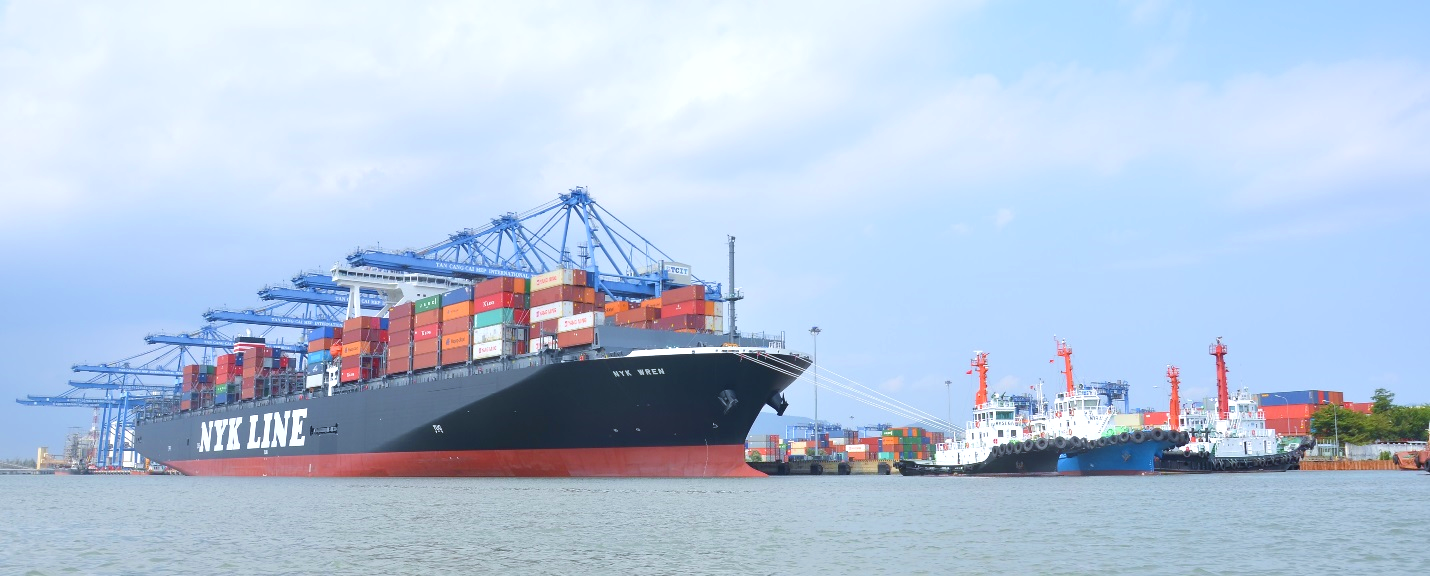
COSCO Shipping’s Profit Drops despite Increase in Volumes
Shanghai-listed COSCO Shipping Holdings saw its profit plunge by 33 percent in the first quarter ended March 31, 2018.
The company’s net profit dropped to CNY 180.8 million (USD 28.4 million) in the period, from CNY 270.1 million (USD 42.5 million) reported in the first quarter of 2017.
For the first quarter of 2018, the group realized an operating revenue of CNY 21.9 billion, representing an increase of 9 percent as compared to CNY 20.1 billion seen in the previous year.
Revenue from the container shipping business was up by 6.5 percent to CNY 20.6 billion, while revenue from the terminal sector jumped by 72.1 percent to CNY 1.5 billion.
Excluding the impact of the acquisitions of NOATUM Terminal and Zeebrugge Terminal, revenue from terminal and related business for the first quarter of 2018 increased by 19.8 percent.
During the first quarter, the group’s container shipping volume reached 5.2 million TEUs, representing a rise of 11.8 percent as compared to 4.6 million TEUs handled in the same period of last year.
COSCO Shipping Holdings’ total throughput in the container terminal business reached 27.2 million TEUs, surging by 37.7 percent from 19.7 million TEUs reported a year earlier.
CMA CGM to take a quarter of CEVA to boost logistics
FRENCH shipping giant CMA CGM says it will acquire nearly 25 per cent of CEVA Logistics, having committed to subscribe for mandatory convertible securities of CEVA for between CHF380 million (US$390 million) and CHF450 million.
These securities will be convertible into CEVA common shares subject to obtaining all required regulatory approvals. The investment takes place in connection with CEVA's planned initial public offering on the SIX Swiss Exchange on April 20 and remains conditioned upon its successful completion.
With this transaction, CMA CGM aims to increase its role in the logistics sector, a business closely related to shipping, said the Marseilles-based company.
Following this equity investment, CMA CGM will nominate two members of CEVA's board. The two companies have agreed to explore potential opportunities to work together towards the development of joint commercial offerings, according to terms that will be defined in the coming months.
The closing of the transaction remains subject to the completion of CEVA's IPO as well as to the approval from regulatory authorities.
PIL sees “positive momentum” going forward into 2018
Singapore-based container line Pacific International Lines (PIL) “positive momentum” generated in the year before to continue into 2018.
The leading regional line said in a press release that it “is encouraged by the recovery in FY2017 that led to strong financial results, and expects overall market conditions to continue to improve, driving shipping volume, freight rates and container sales”.
The increase in container volumes and recovery in its container manufacturing unit’s sales combined with initiatives which improved operational efficiency to turn the company around to a $``9.5m profit from a $251.4m loss in the previous corresponding period.
The group’s container shipping business posted increases in shipping volume and average freight rates of 12% and 9%, year-on-year, respectively. This resulted in a 21.3% growth in the shipping business’ turnover. PIL also successfully implemented initiatives which helped to increase operational efficiencies, as shipping expenses grew by just 9.3% despite the much larger rise in revenue.
The group has also been making active efforts to expand its services, with the launch of two upgraded weekly services in collaboration with the Ocean Alliance on the Far East–Red Sea service route earlier this year.
Maersk to Test AI-Powered Situational Awareness Tools aboard Its Boxship
Danish shipping giant A.P. Moller-Maersk has teamed up with Boston-based Sea Machines Robotics to trial the tech hub’s perception and situational awareness technology aboard one of its newbuild Winter Palace ice-class containerships.
The installation marks the first-time utilization of computer vision, Light Detection and Ranging (LiDAR) and perception software aboard a container vessel to augment and upgrade transit operations.
The solution chosen by Maersk uses artificial intelligence (AI) to improve at-sea situational awareness, object identification and tracking capabilities, Sea Machines Robotics said.
As explained, the system uses advanced sensors to collect a continuous stream of information from a vessel’s environmental surroundings, identify and track potential conflicts, and displays the knowledge in the wheelhouse.
By turning to such a system Maersk wants to prove the technology can remove the line of sight restriction from the bridge, providing the infrastructure for a future autonomous collision avoidance system.
Hapag-Lloyd Sets Its First Climate Goal
German liner giant Hapag-Lloyd is planning to cut its CO2 footprint by 20 percent per TEU-kilometer by 2020 compared to 2016.
The setting of the company’s first climate goal comes as Hapag-Lloyd publishes its first Sustainability Report.
Hapag-Lloyd said that it has already managed to cut its CO2 emissions by 46 percent between 2007 and 2016.
“We have deliberately set a very ambitious goal for ourselves in terms of CO2 emissions because we view sustainability as self-evident, active involvement rather than lip service. Hapag-Lloyd numbers among the leaders in the container shipping sector when it comes to sustainability. Time and again, our involvement far exceeds the measures required by law,” Jörg Erdmann, Senior Director of Sustainability Management at Hapag-Lloyd, said.
Source: World Maritime News

.png)






.jpg)


